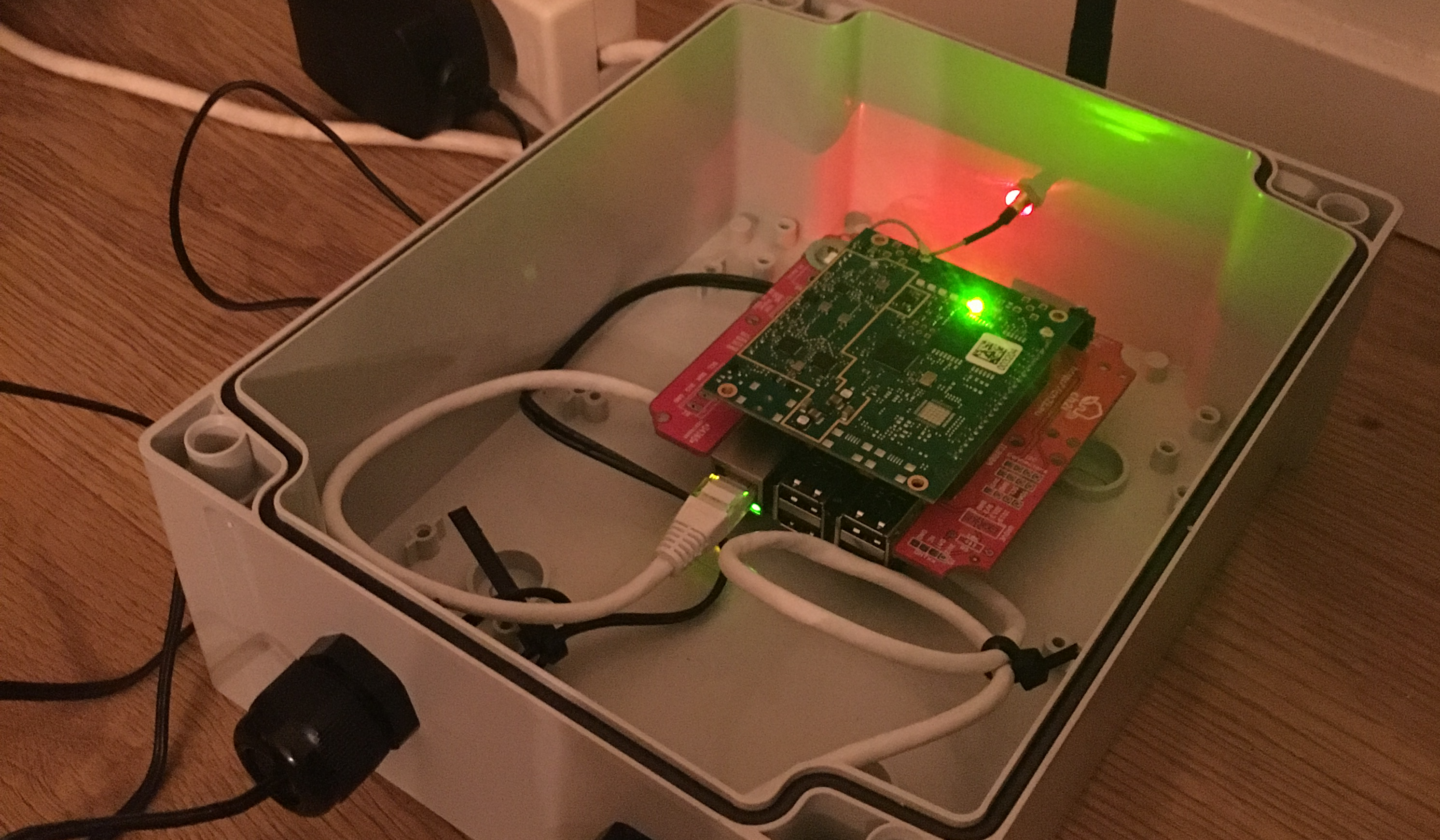Getting started with a LoRaWan gateway
Most of the work I do is software related, but sometimes I do dabble in hardware. As a result I receive more and more requests for hardware related projects. As an aspiring maker I do want to explore this side of technology more so these projects are perfect opportunities for me to learn.
And while learning I thought it would be nice to share what I learned so far as well! I’ve been building a LoRaWan gateway with at least 10 connected nodes. And in the past few weeks I got the gateway working, and I’d like to show which steps I took and what hardware is required.
Bill of materials
- Raspberry Pi 3 (with micro-sd)
- IC880A LoRaWan concentrator
- ch2i shield for the IC880A
- A soldering iron, solder and some headers.
- Spacers and other misc items (such as an enclosure of some sort)
Software
- An account with The Things Network
- Sign up with Resin for remote deployments and management (you also need to download the Resin boot image)
- A little experience with Git
Hardware preparations
- Solder the right headers (2 rows) to the ch2i shield so you can mount it on the Raspberry Pi 3
- Check the spacing and mount the spacers in between the two boards
- Disconnect the shield if it fits and then solder the headers for the concentrator on the ch2i shield, and any optional elements (like LEDs)
- Solder a bridging header onthe ch2i shield that enables you to share power between the Pi and the concentrator (this took me a while to figure out…)
- Re-mount the ch2i on the Raspberry Pi and then add the concentrator
- Plug in the power the LED on the concentrator should light up!
Software setup
- Download the resin-boot image with the right configurations (I used ethernet only, but if you want wifi, be sure to add it or check the docs)
- Flash the micro-sd with the Resin image (I can recommend Etcher)
- If you setup with Ethernet, be sure to plug in the cable!
- Plug in the power for the Raspberry Pi and it should pop up in the Resin Dashboard as online and you can check the logs
- Create a new local git repo by cloning this repository by JPMeijers
- Add, commit and push to resin, as specified in README of the repository.
- Go the The Things Network console, create a gateway and keep a copy of the Gateway Key and ID for the next step
- In the resin dashboard, set the right env-vars and set the reset pin to 11
- After the initial push and configuration the Raspberry Pi should automatically join the Things Network!
If everything went as planned you should be up and running with a working gateway that can be configured to other apps on The Things Network.

In a next post I think I’ll share the process of developing the motes. Something with GPS, movement and other things that might be interesting to measure.